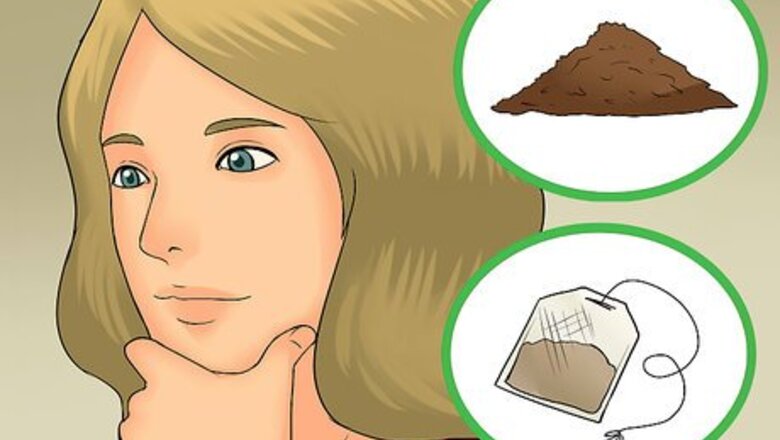
views
Serving English Tea

Select the teas. Decide if you'd like to serve loose-leaf or bagged tea and choose what types of tea to serve. For a small gathering, you may only want to serve one type, but for a larger party you could offer your guests a variety. Some popular types of tea include: Black teas: darjeeling, ceylon, assam Green and herbal teas: jasmine, chamomile, mint Flavored teas: Earl Grey, lemon ginger, chocolate rooibos
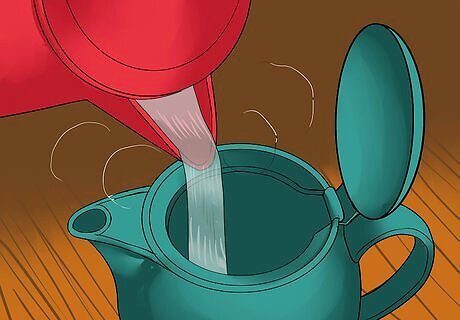
Brew the tea. Follow the manufacturer's brewing instructions for green or herbal teas. For most black teas, you'll need to bring fresh water to a boil in a kettle. Rinse the teapot out with hot water and place the tea leaves or bags into it. Fill the teapot with hot water and let the tea steep for 3 to 5 minutes, depending on how strong you like it. Stir the tea and serve it. If you used loose leaf tea, you'll need to strain it when pouring it into your guest's cup. Avoid squeezing the tea bags with your spoon. This will make the tea bitter.
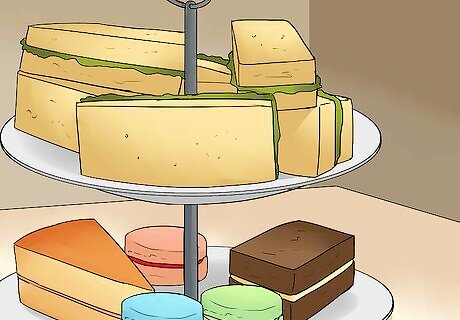
Set out food for afternoon tea. Afternoon or low tea is usually served between 3 and 5 pm. You should serve the tea along with a variety of sweet and savory foods. These should be bite-sized so your guests can just nibble as they sip their tea. Offer your guests tiny sandwiches, scones, and pastries. For finger sandwiches, consider serving cucumber and cream cheese, sliced tomato and watercress, or chicken salad sandwiches with the crusts trimmed. Consider serving a variety of miniature sweet scones that you can serve with clotted cream, jam, or citrus curds. You can buy or make small pastries and baked goods like shortbread, macarons, or tea cake.

Arrange food for high tea. High tea is often confused with afternoon tea, but it refers to a basic meal served with tea around dinner time. Because this is an informal tea, you can set out cold meats, cooked eggs, fish, cakes, and sandwiches along with the brewed tea. You can still set out cookies and fruit, but they don't need to be as elaborate as those for afternoon tea.
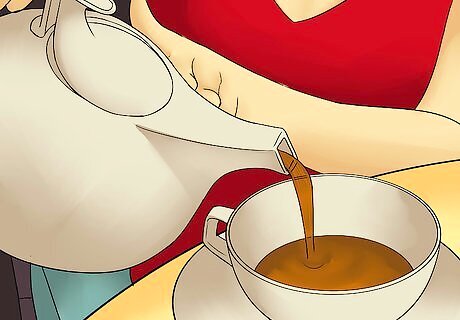
Pour the tea for your guests. Ask your guests how they take their tea. Pour the tea into their cup and then add the lemon, milk, or sugar they asked for. Give the cup to your guest and let them serve themselves food. You can drink your tea once you've served all of your guests. Consider offering alternative milks or sugars for your guests. For example, offer soy milk or almond milk instead of cow's milk. You can also offer honey or stevia instead of granulated sugar.
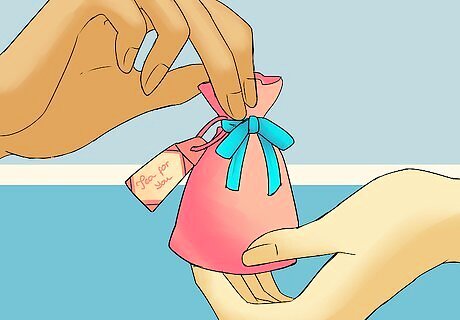
Make it a special event. In addition to traditional afternoon teas, you can make the event more of a party. For example, serve champagne or sherry to make it a royale tea. For a celebration tea, you can also serve a decadent cake. Or if you just want to make a mid-morning tea more special, make it a cream tea by serving scones with clotted cream and fruit curds. If the weather is nice, consider serving the tea outside. For a party, send your guests home with tea party favors. For example, you could send them home with tea strainers, cookies shaped like teapots, or sachets of tea.
Serving Chinese Tea

Select a variety of teas. Decide if you will offer one type of tea or a variety of teas. For example, you may serve your guests loose leaf red tea (also called black tea), green tea, white tea, Oolong tea, and Pu-erh tea. Pu-erh and red tea are the strongest teas (both fermented), while green tea is the least processed. White tea (which is only mildly fermented) and Oolong have mild, light flavors. Popular types of Chinese tea include Lapsang Souchong which has a smokey flavor and Dragon Pearl Jasmine, a light green tea.

Smell the tea and show it to your guests. Once you've chosen your tea, show the leaves to your guests. Give each guest a chance to smell the tea leaves. The focus on serving the tea should be on the tea itself, rather than the process of serving it.
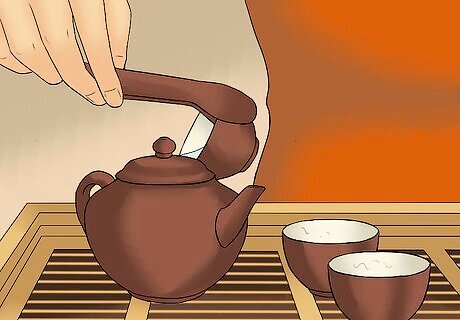
Rinse the teapot and teacups. Place the teapot and teacups on a slatted bamboo box. Bring water to boil and carefully pour it into your Chinese teapot and small teacups. Let them sit while you prepare the tea so the teapot is sterilized and stays warm. Pour out the water just before you're ready to fill the pot with tea. It's important to use a different pot for each type of tea, since the clay of the teapot absorbs some of the tea's essence. Chinese teapots (called Yixing teapots) are smaller than Western teapots and made of unglazed clay. While most of these only hold around 1 cup (240 ml) of tea, you can use a larger pot if you're serving several people.
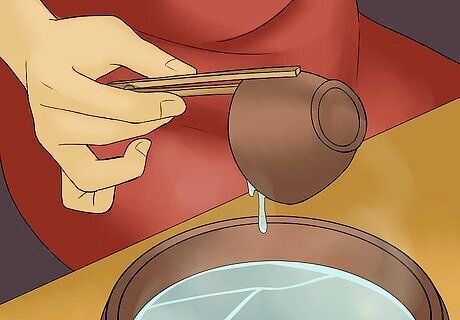
Heat the water and sterilize the strainer. Fill a kettle with fresh water and put it on the stove. Heat the water for your specific type of tea. For example, only heat water for green or jasmine tea to 185 degrees (85 degrees C) which is not quite to boiling. Heat the water for Pu-erh and black teas to a rolling boil (212 degrees F or 100 degrees C). Carefully pour a little of the water over the tea strainer to sterilize it.
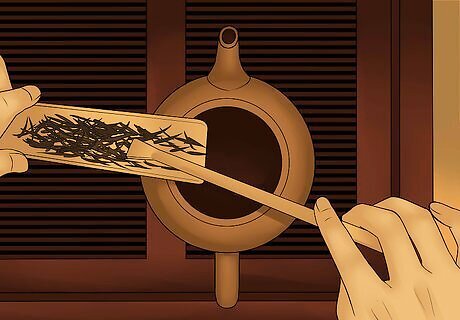
Rinse the tea leaves. Use a bamboo or wood scoop to fill the empty teapot with 1/4 to 1/3 cup (16 to 22 g) of your loose leaf tea and fill the pot with hot water. Let the water overflow the brim of the teapot. Carefully tilt the teapot to an angle so the heat can get out of the teapot and keep the leaves from overcooking. Pour all of the water out of the teapot. You can pour the water over the teacups to keep them warm. Keep in mind that you won't be drinking this since you're just rinsing the leaves and getting them to open up.
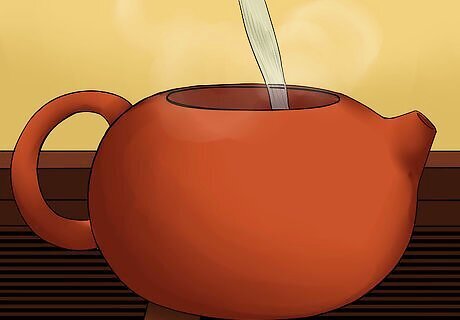
Fill the teapot with water and steep the tea. Fill the teapot with hot water and put the lid on the pot. Continue to pour hot water over the teapot for several seconds so the tea brews evenly inside the pot. Remember your teapot should be on the slatted bamboo box. Steep the tea for 4 to 7 seconds. Dump the hot water out of the teacups. The short brew time is possible because the tea leaves have been rinsed and opened.

Pour the tea into the warmed teacups and serve the tea. Set the strainer over a teacup and pour the steeped tea into the teacup. Fill each cup about three-quarters of the way full. Invite your guests to drink the tea by holding the teacup with both hands and placing it to the right of your guest. Chinese tea should be served plain, without milk, sugar, or lemon.

Fill the teapot with more water for another serving of tea. You can use the same tea leaves to brew another 3 or 4 batches of tea, depending on the quality of the tea leaves you're using. Keep in mind that you'll need a little more steeping time with each subsequent brew. For example, for the second brew, you'll need 6 to 8 seconds. For the third brew, you'll need 8 to 10 seconds and for the fourth brew, you'll need 10 to 12 seconds.
Serving Tea from Around the World

Make Moroccan Tea. Start by pouring loose leaf Gunpowder green tea into a tea kettle along with fresh water. Place the kettle on the stove and bring the tea to a boil. Add a handful of fresh mint and sugar according to your taste. Steep the tea for about 5 minutes. To serve the tea, carefully pour it from up high into small glass cups. This will create a little foam. You can add more water to the kettle for a second brewing. Keep in mind that the flavor will change as the leaves continue to steep.
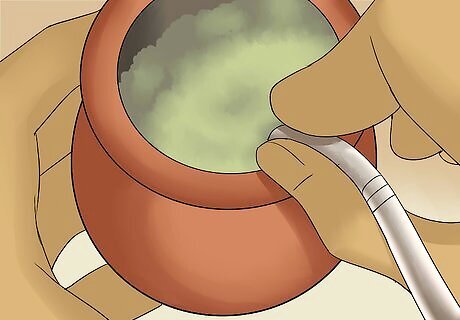
Make Yerba Mate. Fill the mate (a small dried gourd) 2/3 full of yerba mate. Tilt the gourd so the yerba mate collects on one side. Cover the top of a bombilla (filter straw) with your thumb and insert the filtered end into the side of the gourd that doesn't have the yerba mate. Release your thumb and pour a few teaspoons of cold water near the straw. Slowly fill the gourd with hot water that's about 150 degrees F (65 degrees C). Sip the tea through the bombilla. Serving yerba mate is a social event. You can fill the gourd and pass it around to your guests. You can refill the gourd with fresh hot water 15 to 20 times.
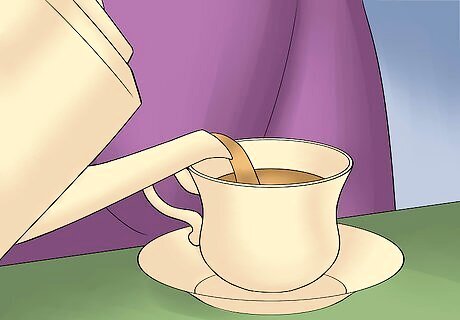
Make Indian milk teas. Pour milk into a saucepan and add black tea powder. You can use ground loose leaf tea or open tea packets and dump the powder in. Stir the milky tea and heat it until it boils. Strain the tea and stir in sugar according to your taste. Serve the milk tea in small earthenware cups. To make masala chai, add 4 black peppercorns, 1 stick of cinnamon, 6 green cardamom pods, 6 cloves, 1 inch (2.5 cm) of peeled, sliced ginger root, and 2 tablespoons (8 g) of sugar to the milky tea as it heats.




















Comments
0 comment